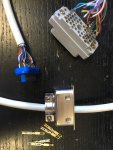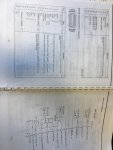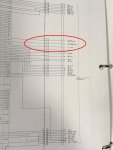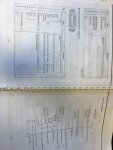Miroslav,
I was simply giving an alternate suggestion and a possible solution to the proposer's problem/question, especially in relation to trying to purchase "good" quality tape (especially 1" that I think the Teac uses), whereas he should not have too much trouble purchasing the S-video tape.
I do agree about the DAT machines, especially in relation to the tape itself.
I also agree that today if I was purchasing new gear, I would be going in an entirely different direction, but the HD-24 gear and digital console that I currently have (and have had and used for possibly 15years) is still producing excellent results including at least one "Top 10" Billboard CD and was (would be) one hell of a lot cheaper than purchasing a 72 channel Protools (or similar) system.
I should say that I also still have my "only one of its kind in the world" (I know because I built it), 8-track, 12 speed, 1" recorder, that needs three people to carry and my 1/4" TEAC 2-track, valve, recorder (that Teac/Tascam claim that they have never heard of although it has TEAC and a model/part number on every item in the unit) --- I use this machine as the master stereo recorder when recording on the 8-track and want to keep everything in the analogue domain (I use a old Behringer 24/8/2 console when doing these recordings).
I have been fortunate in that I have never used 456 type tape, but only ever used EMI tape and about the time I purchased the HD-24 units, I also purchased about 200 of the EMI tapes (both 1" and 1/4") and things recorded on them in the 1960's are still as good as if recorded yesterday --- absolutely no shedding or any of the other problems that have been experienced over the years with tape failing and definitely not one recording has been ruined because of tape failure. On many of the 1" tapes because of the number of head passes, during the recording and mixing processes, you can actually see the individual tracks.
The 8-track recorder works perfectly until its "piles" start playing up and need to be operated on --- but that's a story for another time !!!!!!!
David
I was simply giving an alternate suggestion and a possible solution to the proposer's problem/question, especially in relation to trying to purchase "good" quality tape (especially 1" that I think the Teac uses), whereas he should not have too much trouble purchasing the S-video tape.
I do agree about the DAT machines, especially in relation to the tape itself.
I also agree that today if I was purchasing new gear, I would be going in an entirely different direction, but the HD-24 gear and digital console that I currently have (and have had and used for possibly 15years) is still producing excellent results including at least one "Top 10" Billboard CD and was (would be) one hell of a lot cheaper than purchasing a 72 channel Protools (or similar) system.
I should say that I also still have my "only one of its kind in the world" (I know because I built it), 8-track, 12 speed, 1" recorder, that needs three people to carry and my 1/4" TEAC 2-track, valve, recorder (that Teac/Tascam claim that they have never heard of although it has TEAC and a model/part number on every item in the unit) --- I use this machine as the master stereo recorder when recording on the 8-track and want to keep everything in the analogue domain (I use a old Behringer 24/8/2 console when doing these recordings).
I have been fortunate in that I have never used 456 type tape, but only ever used EMI tape and about the time I purchased the HD-24 units, I also purchased about 200 of the EMI tapes (both 1" and 1/4") and things recorded on them in the 1960's are still as good as if recorded yesterday --- absolutely no shedding or any of the other problems that have been experienced over the years with tape failing and definitely not one recording has been ruined because of tape failure. On many of the 1" tapes because of the number of head passes, during the recording and mixing processes, you can actually see the individual tracks.
The 8-track recorder works perfectly until its "piles" start playing up and need to be operated on --- but that's a story for another time !!!!!!!
David
Last edited:










 User manual says something about trimmer for setting right level...
User manual says something about trimmer for setting right level...